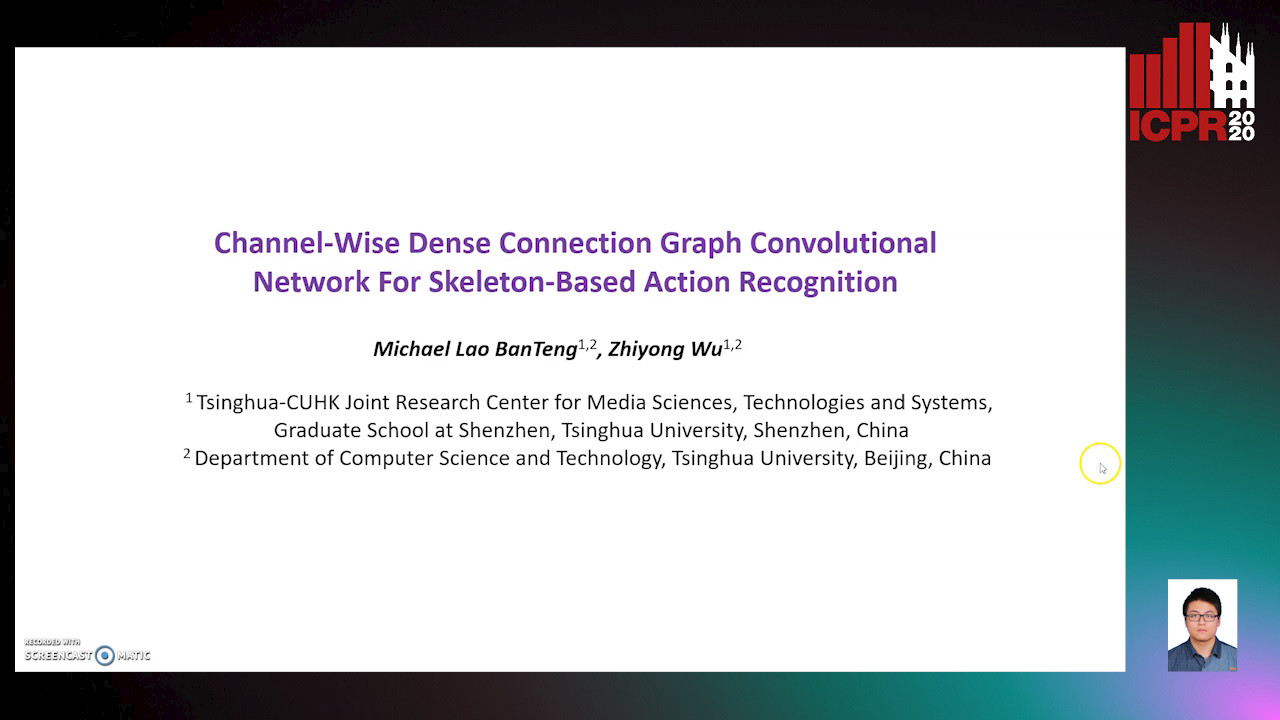Michael Lao Banteng
Paper download is intended for registered attendees only, and is
subjected to the IEEE Copyright Policy. Any other use is strongly forbidden.
Papers from this author
Channel-Wise Dense Connection Graph Convolutional Network for Skeleton-Based Action Recognition
Michael Lao Banteng, Zhiyong Wu

Auto-TLDR; Two-stream channel-wise dense connection GCN for human action recognition
Abstract Slides Poster Similar
Skeleton-based action recognition task has drawn much attention for many years. Graph Convolutional Network (GCN) has proved its effectiveness in this task. However, how to improve the model's robustness to different human actions and how to make effective use of features produced by the network are main topics needed to be further explored. Human actions are time series sequence, meaning that temporal information is a key factor to model the representation of data. The ranges of body parts involved in small actions (e.g. raise a glass or shake head) and big actions (e.g. walking or jumping) are diverse. It's crucial for the model to generate and utilize more features that can be adaptive to a wider range of actions. Furthermore, feature channels are specific with the action class, the model needs to weigh their importance and pay attention to more related ones. To address these problems, in this work, we propose a two-stream channel-wise dense connection GCN (2s-CDGCN). Specifically, the skeleton data was extracted and processed into spatial and temporal information for better feature representation. A channel-wise attention module was used to select and emphasize the more useful features generated by the network. Moreover, to ensure maximum information flow, dense connection was introduced to the network structure, which enables the network to reuse the skeleton features and generate more information adaptive and related to different human actions. Our model has shown its ability to improve the accuracy of human action recognition task on two large datasets, NTU-RGB+D and Kinetics. Extensive evaluations were conducted to prove the effectiveness of our model.